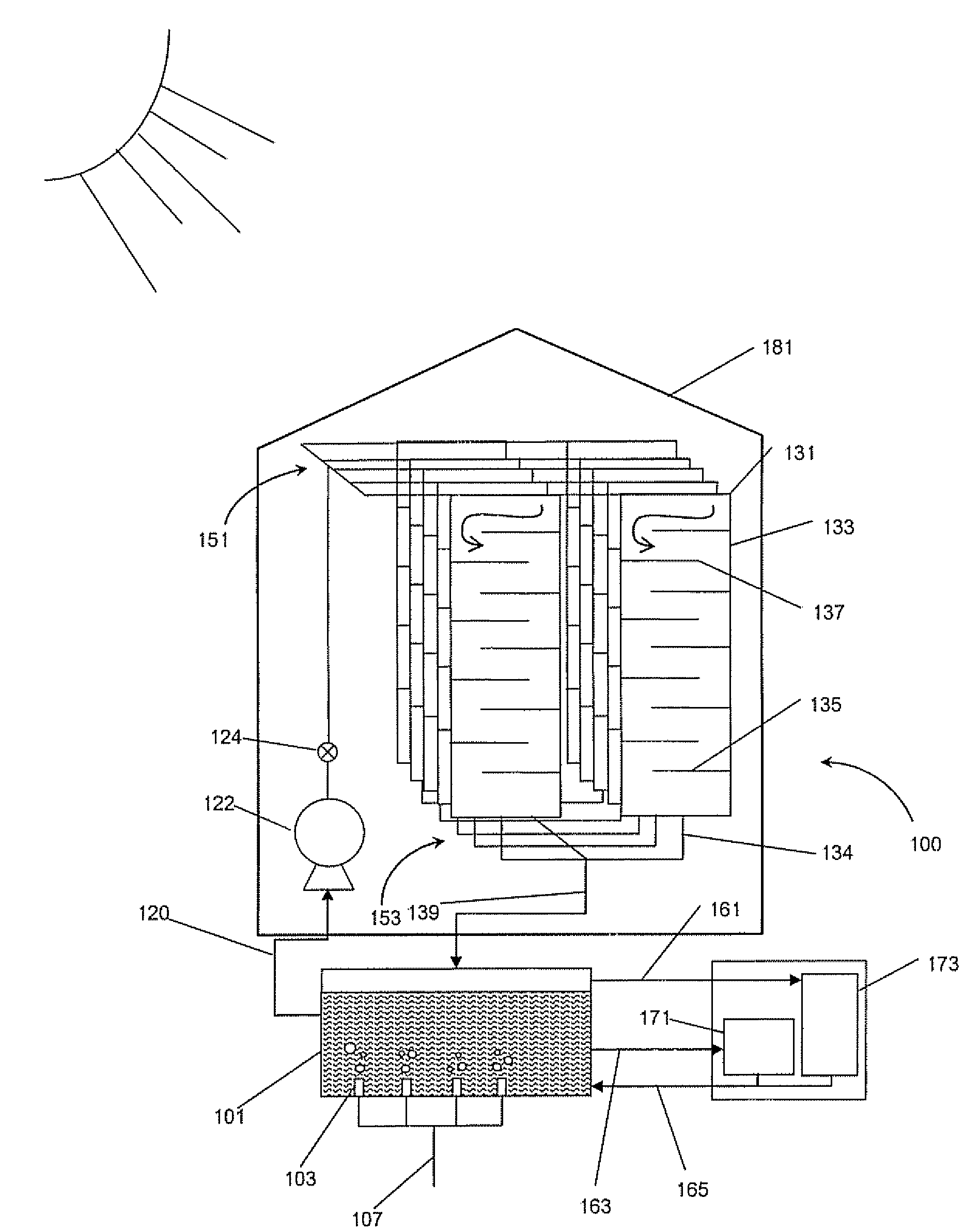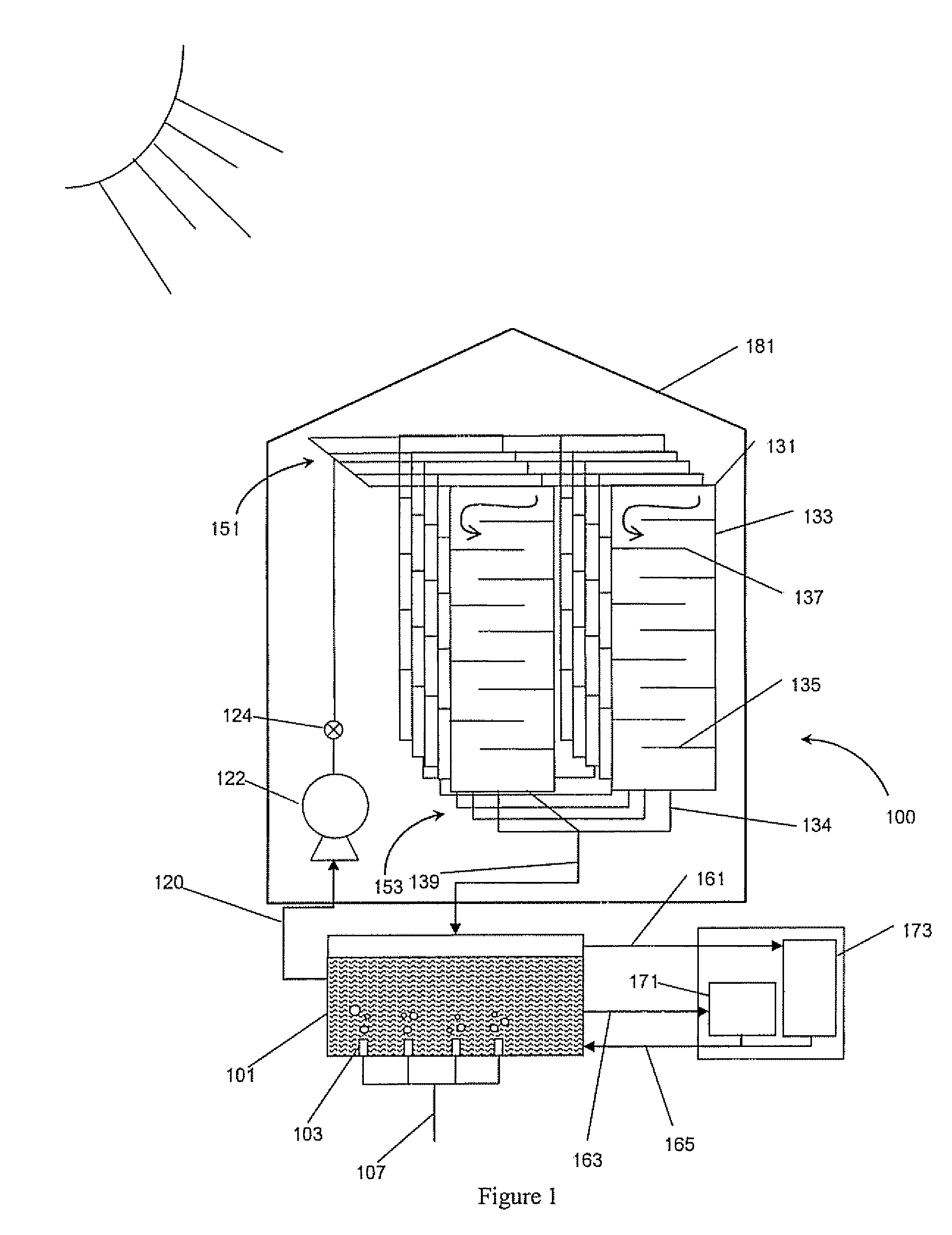Method and apparatus for co2 sequestration
a sequestration method and co2 technology, applied in the field of methods, can solve the problems of destroying entire ecosystems, unable to achieve cost effective methods, and unable to solve problems, so as to achieve the effect of facilitating production, and reducing the number of contaminated areas
- Summary
- Abstract
- Description
- Claims
- Application Information
AI Technical Summary
Benefits of technology
Problems solved by technology
Method used
Image
Examples
Embodiment Construction
[0029]FIG. 1 illustrates an embodiment of an apparatus for sequestering CO2 using algae. In this embodiment, the apparatus includes a culture tank 101, a pump 122, and one or more bioreactors 131. The culture tank 101, pump 122, and bioreactors 131 are all in fluid communication with each other and are all connected to each other via a plurality of conduits or lines.
[0030]The culture tank 101 is filled with a suspension of algae and water. Typically, culture tank 101 has a rectangular structure. However, culture tank 101 may be of any configuration, i.e. cylindrical, known to one of ordinary skill that is optimal for culturing algae. Culture tank 101 is made out of materials that are resistant to corrosion such as polymers or stainless steel. In a preferred embodiment, culture tank 101 is constructed out of plastic, plastic liner, treated metal, or combinations thereof. According to another embodiment, culture tank 101 is closed to the atmosphere such that apparatus 100 is a closed ...
PUM
| Property | Measurement | Unit |
|---|---|---|
| flow rate | aaaaa | aaaaa |
| thickness | aaaaa | aaaaa |
| thickness | aaaaa | aaaaa |
Abstract
Description
Claims
Application Information
 Login to View More
Login to View More - R&D
- Intellectual Property
- Life Sciences
- Materials
- Tech Scout
- Unparalleled Data Quality
- Higher Quality Content
- 60% Fewer Hallucinations
Browse by: Latest US Patents, China's latest patents, Technical Efficacy Thesaurus, Application Domain, Technology Topic, Popular Technical Reports.
© 2025 PatSnap. All rights reserved.Legal|Privacy policy|Modern Slavery Act Transparency Statement|Sitemap|About US| Contact US: help@patsnap.com



